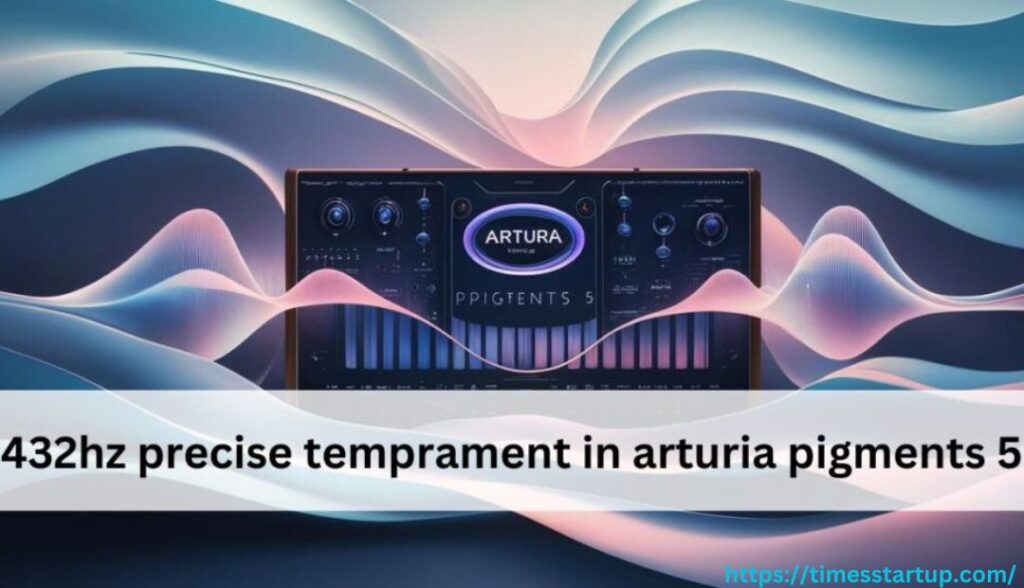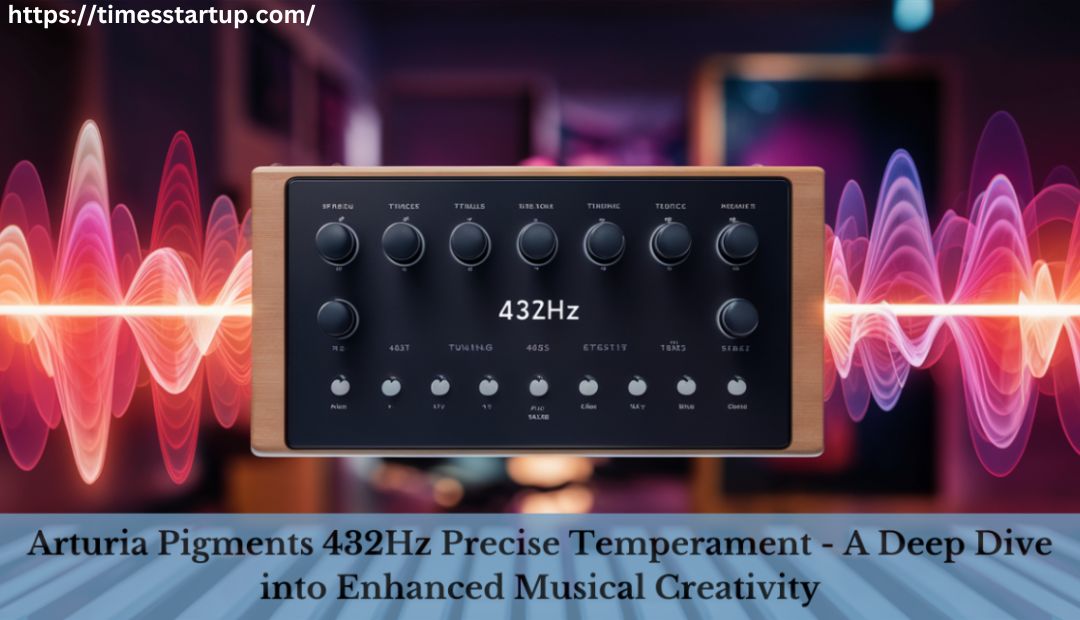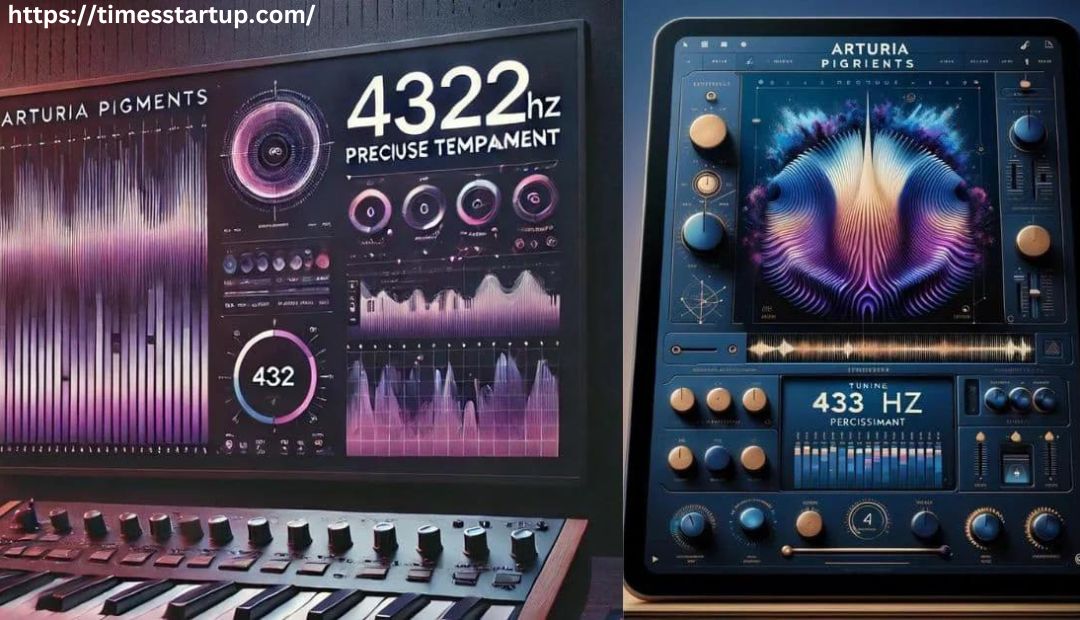
Welcome to the world of music where frequencies can transform your creative process. If you’ve ever felt a deeper connection to sound, you might be curious about 432Hz and its potential benefits. In this guide, we’ll explore how to use 432Hz precise temperament in Arturia Pigments 5—a powerful software synthesizer that offers endless sonic possibilities. Whether you’re a seasoned musician or just starting out, understanding this unique tuning can elevate your compositions and enhance your listening experience. Let’s dive into what makes 432Hz special and how you can incorporate it into your musical journey.
432hz Precise Temprament in Arturia Pigments 5: A Completed Guidance
Exploring 432Hz precise temperament in Arturia Pigments 5 opens up new avenues for creativity. This unique tuning resonates with many musicians, offering a distinct sound that some believe is more harmonious and calming.
The process of setting it up may seem daunting at first, but this guidance will walk you through each step seamlessly. With the right adjustments, your music can reflect the soothing properties associated with this frequency.
Whether you’re crafting lush pads or intricate melodies, integrating 432Hz into your projects can transform how you create and experience sound. Let’s dive deeper into its significance and practical application within Pigments 5.
432hz Precise Temprament in Arturia Pigments 5
432hz precise temperament in Arturia Pigments 5 offers a unique sonic experience. This tuning is believed to align better with natural frequencies, enhancing creativity and emotional connection in music.
Arturia Pigments 5 allows you to easily implement this frequency within its powerful synthesis environment. Users can explore various sound design possibilities while incorporating the warm tones of 432hz.
By integrating this alternative tuning system, musicians can craft harmonious soundscapes that resonate deeply with their audiences. Whether you’re a seasoned producer or just starting out, experimenting with 432hz could transform your musical journey.
What is 432hz and Why Does it Matter?
Many believe it to be the natural frequency of the universe, resonating with our own vibrations. This pitch deviates from the standard tuning of 440Hz commonly used in music today.
Advocates argue that music tuned to 432Hz promotes emotional well-being, making listeners feel more relaxed and connected. Some even claim it enhances creativity and mindfulness.
Though scientific support varies, the appeal lies in personal experience. Musicians exploring this frequency often seek deeper connections through their art and soundscapes.
440hz vs 432hz: What’s the Big Deal?
The debate between 440Hz and 432Hz tuning has intrigued musicians for years. Proponents of 432Hz claim it resonates more harmoniously with nature and the human body. They argue that music tuned to this frequency can evoke feelings of peace and well-being.
On the other hand, 440Hz is the standard pitch adopted by most modern music. It’s widely accepted in orchestras, studios, and performances globally. This frequency is often seen as more practical for consistency among various instruments.
Critics dismiss the significance of these frequencies, suggesting that personal preference plays a bigger role in musical appreciation than any specific tuning system does.
Getting to Know Arturia Pigments 5
Arturia Pigments 5 is a powerful software synthesizer that combines versatility with innovative sound design tools. Its user-friendly interface allows musicians to explore a wide range of sonic possibilities effortlessly.
With advanced wavetable synthesis, virtual analog, and granular engines all in one platform, creativity knows no bounds. The intuitive modulation system enhances the creative process by allowing users to manipulate sounds on-the-fly.
Whether you’re crafting lush pads or intricate leads, Pigments 5 offers an impressive library of presets to get you started quickly. It’s designed for both beginners and seasoned pros looking to elevate their music production experience.
How to Set Up 432hz in Pigments 5.
To set up 432hz in Arturia Pigments 5, start by opening the software and locating the tuning settings. Navigate to the global settings menu, where you can adjust pitch parameters.
Next, change the A4 reference from 440hz to 432hz. This adjustment is crucial for achieving that desired harmonic resonance associated with this frequency.
Save your settings and create a new project. Experiment with different sounds and patches within Pigments while enjoying the enriched soundscape that 432hz provides. Let creativity flow as you explore this unique tuning.
Famous Songs and Artists Using 432hz
Numerous artists have embraced 432hz tuning, believing it enhances the emotional resonance of their music. Legendary figures like John Lennon and Bob Marley reportedly favored this frequency for its harmonious qualities. Their tracks remain timeless examples of how sound can foster deeper connections.
In contemporary circles, musicians like Enya and some electronic artists explore 432hz in their compositions. They often seek to create an immersive listening experience that transcends traditional boundaries.
Even classical composers such as Bach are sometimes revisited through the lens of 432hz, inviting new interpretations of cherished pieces. This frequency continues to inspire both old and new generations alike.
How 432hz Might Affect Listeners?
The debate surrounding 432Hz tuning often highlights its potential emotional impact on listeners. Many claim it evokes feelings of calmness and tranquility, promoting relaxation and reducing anxiety. This frequency is thought to resonate more harmoniously with our bodies.
Furthermore, some argue that music tuned to 432Hz encourages deeper connections during listening experiences. It may amplify creativity or enhance meditation practices by creating a sense of unity with the surrounding environment.
However, individual responses can vary widely. While some people report positive effects, others might not notice any difference at all when exposed to this alternative tuning method.
Trying It Out: Making Music with 432hz Precise Temprament in Arturia Pigments 5
Diving into music production with 432hz precise temperament in Arturia Pigments 5 can be an inspiring experience. The lush soundscapes and rich textures it offers encourage creativity. You’ll find that subtle tuning shifts create a warm resonance, making your compositions feel more authentic.
Experimenting with different synth parameters becomes a delightful journey. Modulating filters and envelopes while maintaining the 432hz foundation can lead to unexpected yet beautiful results. Let your imagination guide you as you layer sounds in this unique tuning.
Engage deeply with effects like reverb and delay to enhance the spatial qualities of your tracks. Allow yourself to play freely, discovering new sonic territories along the way.
Pros and Cons of Using 432hz
Using 432Hz can create a more soothing and harmonious sound environment. Many musicians claim that it resonates deeply with listeners, enhancing emotional connection through music.
However, some argue that the benefits are subjective. Not everyone experiences a difference between 432Hz and the standard tuning of 440Hz. This skepticism may lead to debates among artists about its effectiveness.
Additionally, not all instruments or digital software easily accommodate this tuning. Musicians might face challenges when collaborating or performing without standardized tuning systems in place.
FAQ About 432hz Precise Temprament in Arturia Pigments 5
Many musicians wonder if 432hz really makes a difference. Some claim it creates a more soothing and natural sound, while others argue that the effect is purely psychological. Personal preference plays a key role.
Another common question involves how to switch back to standard tuning easily. Arturia Pigments 5 allows users to toggle between tunings without hassle, making experimentation seamless.
People often ask which genres benefit most from 432hz tuning. While it can enhance any style, many find it particularly suited for ambient and acoustic music due to its calming qualities. Experimentation is encouraged.
Exploring 432hz precise temperament in Arturia Pigments 5
Exploring 432hz precise temperament in Arturia Pigments 5 can unlock a new realm of creativity. It’s not just about tuning; it’s an experience that resonates deeply with both the artist and listener.
As you experiment, you’ll notice how this frequency influences your compositions, adding depth and harmony. Each note feels more connected to the universe around you.
Your music can transcend conventional boundaries, inviting others into a sonic world that is uniquely yours.
Setting up 432Hz tuning in Arturia Pigments 5
Setting up 432Hz tuning in Arturia Pigments 5 starts with opening your project. Here, you can change the reference frequency. Next, adjust the master tuning to 432Hz. This step is crucial for ensuring that all sounds generated align with this specific pitch standard.
After adjusting the master tuning, play some notes or presets to test out your new setting. You should hear a noticeable difference in how harmonious and calming your music feels compared to traditional tunings.
A Path to Harmonious Soundscapes
432hz precise temprament in arturia pigments 5 offers a unique approach to music creation. By embracing this tuning system, artists can explore new emotional depths and richer soundscapes. The transition may require some adjustments, but the rewards are evident.
As you venture into this sonic realm, remember the impact of your choices on listeners. Experimenting with 432hz can lead to unexpected connections and resonances within your compositions.
Arturia Pigments 5 makes it accessible and enjoyable to incorporate this alternative tuning. Dive into its features and let creativity guide you through every note. Integrating 432hz into your work could transform how you perceive music itself—opening doors to harmonious experiences that resonate far beyond conventional boundaries.




